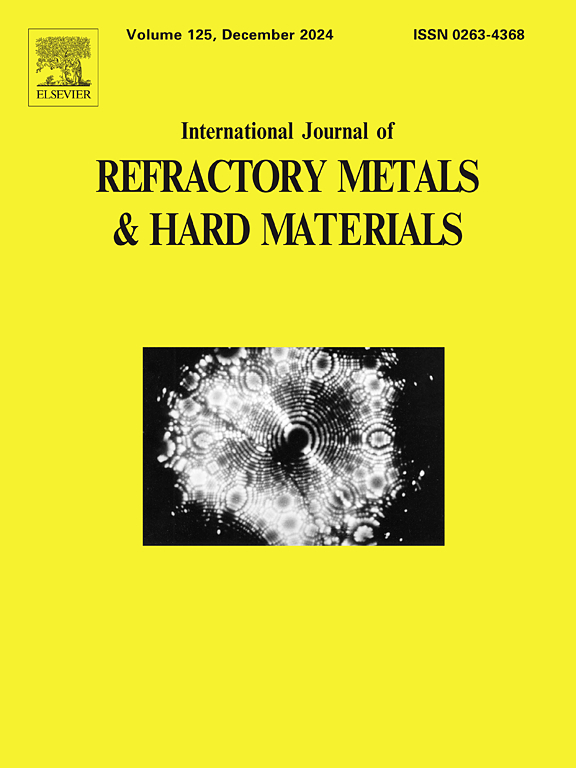大切削深度变长受限接触刀具加工奥氏体不锈钢的刀具磨损及表面完整性分析
IF 4.2
2区 材料科学
Q2 MATERIALS SCIENCE, MULTIDISCIPLINARY
International Journal of Refractory Metals & Hard Materials
Pub Date : 2025-05-03
DOI:10.1016/j.ijrmhm.2025.107217
引用次数: 0
摘要
奥氏体不锈钢在加工过程中面临着加工性差、刀具磨损严重、表面质量不佳等诸多挑战。针对刀屑接触条件差导致的加工问题,开发了可变刀屑接触长度的新型受限接触刀具,以提高加工性能。在本研究中,系统分析了316L奥氏体不锈钢湿法加工过程中刀具-切屑接触长度变化对刀具磨损和表面完整性的影响。结果表明,当应用开发的受限接触工具时,在摩擦学特性、工具寿命和表面完整性方面有了显着改善。与传统的限制接触刀具相比,加工力、摩擦、刀具磨损、表面粗糙度、显微硬度和残余应力均有所降低。从这项研究中获得的见解为奥氏体不锈钢提供了一种有效的切削方法,并为刀具设计和加工难切削材料时实现高表面质量提供了理论依据。本文章由计算机程序翻译,如有差异,请以英文原文为准。
Tool wear and surface integrity analysis of austenitic stainless-steel machining with variable-length restricted contact tools at large depth of cut
Austenitic stainless steels face multiple challenges during machining, including poor workability, severe tool wear, and unfavorable surface quality. Considering the machining issues resulting from poor tool-chip contact conditions, novel restricted contact tools with variable tool-chip contact lengths were developed to enhance machining performance. In this study, a systematic analysis was conducted to investigate the impact of variable tool-chip contact lengths on tool wear and surface integrity during the wet machining of 316L austenitic stainless-steel. The results demonstrated a significant improvement in tribological characteristics, tool life, and surface integrity when developed restricted contact tools were applied. Compared with conventional restricted contact tools, the machining force, friction, tool wear, surface roughness, microhardness, and residual stress were reduced. The insights obtained from this investigation present an effective cutting method for austenitic stainless steels and offer a rationale for tool design and the achievement of high surface quality when machining hard-to-cut materials.
求助全文
通过发布文献求助,成功后即可免费获取论文全文。
去求助
来源期刊
CiteScore
7.00
自引率
13.90%
发文量
236
审稿时长
35 days
期刊介绍:
The International Journal of Refractory Metals and Hard Materials (IJRMHM) publishes original research articles concerned with all aspects of refractory metals and hard materials. Refractory metals are defined as metals with melting points higher than 1800 °C. These are tungsten, molybdenum, chromium, tantalum, niobium, hafnium, and rhenium, as well as many compounds and alloys based thereupon. Hard materials that are included in the scope of this journal are defined as materials with hardness values higher than 1000 kg/mm2, primarily intended for applications as manufacturing tools or wear resistant components in mechanical systems. Thus they encompass carbides, nitrides and borides of metals, and related compounds. A special focus of this journal is put on the family of hardmetals, which is also known as cemented tungsten carbide, and cermets which are based on titanium carbide and carbonitrides with or without a metal binder. Ceramics and superhard materials including diamond and cubic boron nitride may also be accepted provided the subject material is presented as hard materials as defined above.

 求助内容:
求助内容: 应助结果提醒方式:
应助结果提醒方式:


